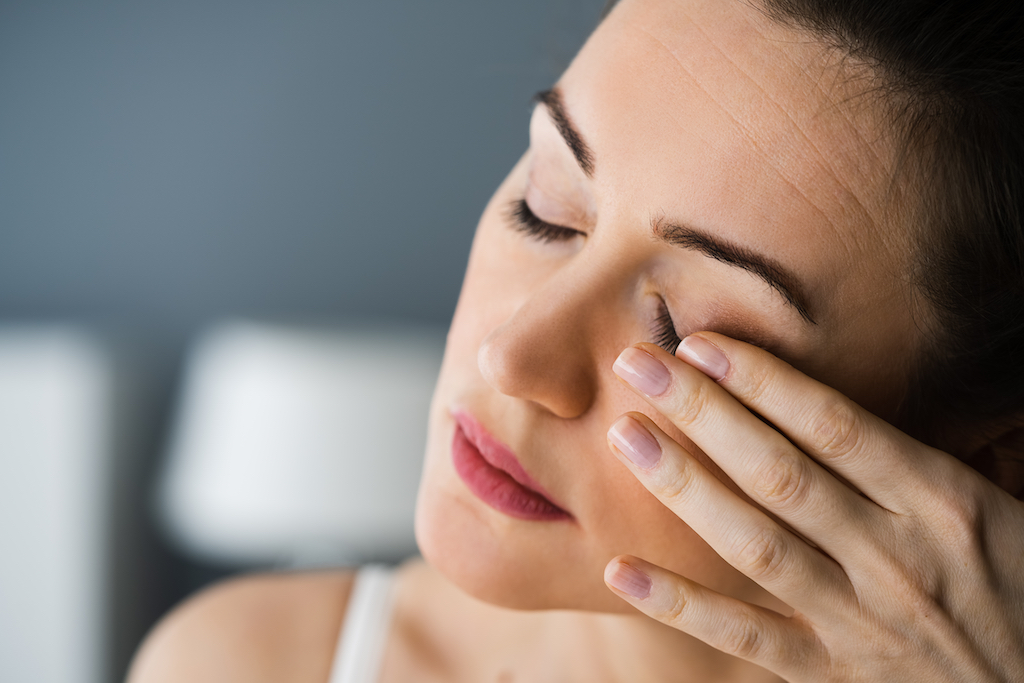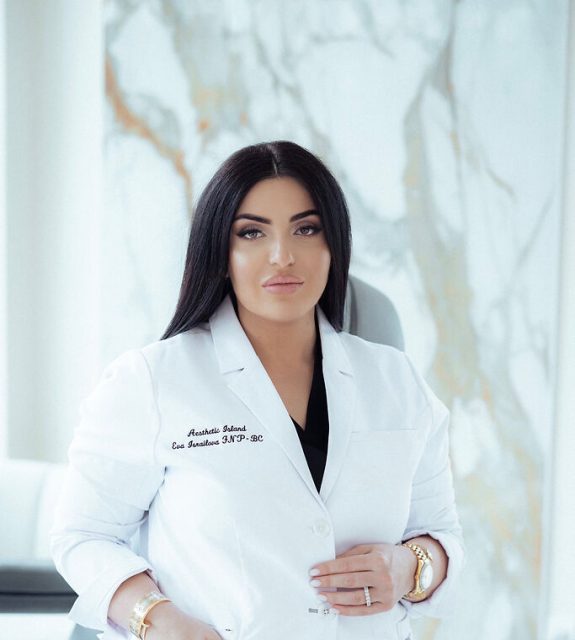Viraj J. Mehta, MD, MBA is an Oculofacial Plastics and Orbit expert, who serves a local and an international community at his practice near Washington, D.C. Born and raised in Cincinnati, OH, Dr. Mehta attended Cornell University for undergraduate and business school. He went on to complete his medical education and training at top institutions across the country, including Case Western Reserve University School of Medicine, Memorial Sloan Kettering Cancer Center, and Mayo Clinic.
 Photo Credit: Shutterstock
Photo Credit: Shutterstock
Bacterial eyelid infections stem from the root of your eyelash. One will notice an infection upon the inflammation of the eyelid. When this occurs, it can become more than just a cosmetic annoyance, possibly affecting your eyesight. If it gets to the point of disturbing your vision it is imperative that you seek help from an oculoplastic specialist. Here Haute Beauty expert Dr. Viraj Mehta explains the two most common infections: styes and chalazia.
What are styes and chalazia?
A chalazion is caused by an obstruction of one of the oil (meibomian) glands in your eyelids along the margin of your eyelids. These glands can get blocked, causing a backup of irritating lipids and oily material into the eyelid soft tissues. This results in a granulomatous, or inflammatory, a reaction that results in the formation of a bump in your eyelid that is usually not very painful.
A hordeolum, or a stye, is an acute, localized swelling of the eyelid usually caused by an infection, which can be painful. Similar to chalazia, hordeola/styes result from obstruction of different glands in your eyelids (glands of Moll or Zeis).
Are styes and chalazia common? Can you keep getting them?
Yes, styes and chalazia are fairly common, though fortunately they usually resolve on their own. People can keep getting styes or chalazia, so it's important to maintain a good regimen for cleaning your lashes to prevent new ones. If a stye or chalazion keeps occurring in the exact same spot, it can be concerning for an eyelid cancer, so it's important to see an oculoplastics specialist.
How do you treat a stye and chalazia?
Here is my usual recommendation for treatment:
- Apply warm compresses at least two or three times per day for five to ten minutes at a time.
- Clean your eyelashes with baby shampoo or an over-the-counter eyelid wipe or cleansers like Ocusoft, Cliradex, or Avenova.
- Put one drop of artificial tears two or three times per day into the affected eye.
If this doesn't clear it up in a couple of weeks, or if you just need it gone more quickly, there are ways in which a specialist can help. These options include prescription-strength steroid-antibiotic ointment, a steroid injection in the eyelid or surgically draining the chalazion or stye.
 Photo Credit: Shutterstock
Photo Credit: Shutterstock
What happens if you leave a stye or chalazia untreated?
The great news is, usually nothing! Styes and chalazia are typically just annoying and unsightly, but rarely ever cause any issues. Sometimes, a stye can lead to a more generalized infection of the eyelid skin, called preseptal cellulitis. If this happens, patients may need oral antibiotics to help clear the infection. It's important to contact an Oculoplastics specialist or Ophthalmologist if you have significant pain, redness, swelling, or vision changes.
Are there any ways to avoid getting a stye or chalazia?
The best ways to avoid getting a stye or chalazion are to continue with warm compresses, cleaning your eyelashes, and artificial tears occasionally. This can help reduce any source of irritation or inflammation in the eyelids that can lead to a blockage of an oil gland. Another great option to consider is the new iLux/BlephEx treatment, which is a 15-minute in-office treatment to clean the eyelid margin and unblock oil glands.





















